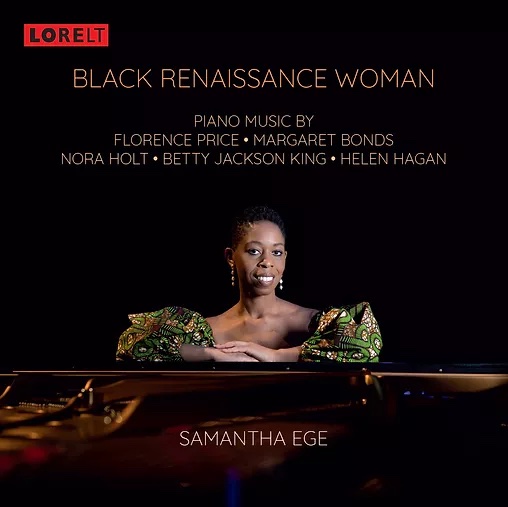Margaret Bonds
Spiritual Suite
Nora Holt
Negro Dance
Helen Hagan
Piano Concerto in C Minor
Betty Jackson King
Four Seasonal Sketches
Florence Price
Piano Concerto in One Movement
Samantha Edge Piano
John Paul Ekin Piano
Lorelt Lontano Records LNT145
Full Price

The Review
Samantha Edge has, from her base in Oxford, been doing superb work recently in championing the music of Florence Price and here she extends her reach to a further group of black women composers of the last century.
Perhaps the most important service she does for them (apart from playing so well) is to draw attention to the fact that, while they may have been neglected over the last 50 years, earlier in their careers they were both successful and held respected positions in American musical life, despite all the barriers of segregation and discrimination that were put in their way. There is nothing obscure about this music. It is firmly in the mainstream of its time.
The pieces by Bonds and Holt do not stray far from what was expected of black themes then, drawing on spirituals and ragtime, but the pianism is wholehearted. Betty Jackson King (1928 – 1994) is the youngest of these composers and, while her Seasonal Sketches sound more like 1904 than 1954, they also escape from the stereotypical melodic confines into the territory of Debussy and Rachmaninov. Summer Interlude has a lovely sense of exotic movement along with the lingering heat, the Autumn Dance is fervent, Winter Holiday is pealing bells and the scamper of children.
The piano concertos by Helen Hagan (1891 – 1964) and Florence Price (1887 – 1953) are given in two piano arrangements and as an introduction to them, Edge and Ekin provide committed performances. It would be good to hear them in full orchestral guise, though. Played only on the piano, there is a loss of dialogue and a sameness of timbre and emphasis that becomes wearing after a while, however well the orchestral side is rendered. The Hagan concerto is the more virtuosic of the two and, written in 1912, is firmly in the European late romantic tradition. Price’s from 1934 is back in the ragtime and folk-song genre. Although she is more famous that Hagan these days, I was more impressed by Hagan’s invention.
If there is still a hint of the research project to Samantha Edge’s exploration, it is a project well worth the journey, and a reminder of the strength in depth of American composers whose style is all their own but sits in a sound world somewhere between Beach and Copland.
SM
